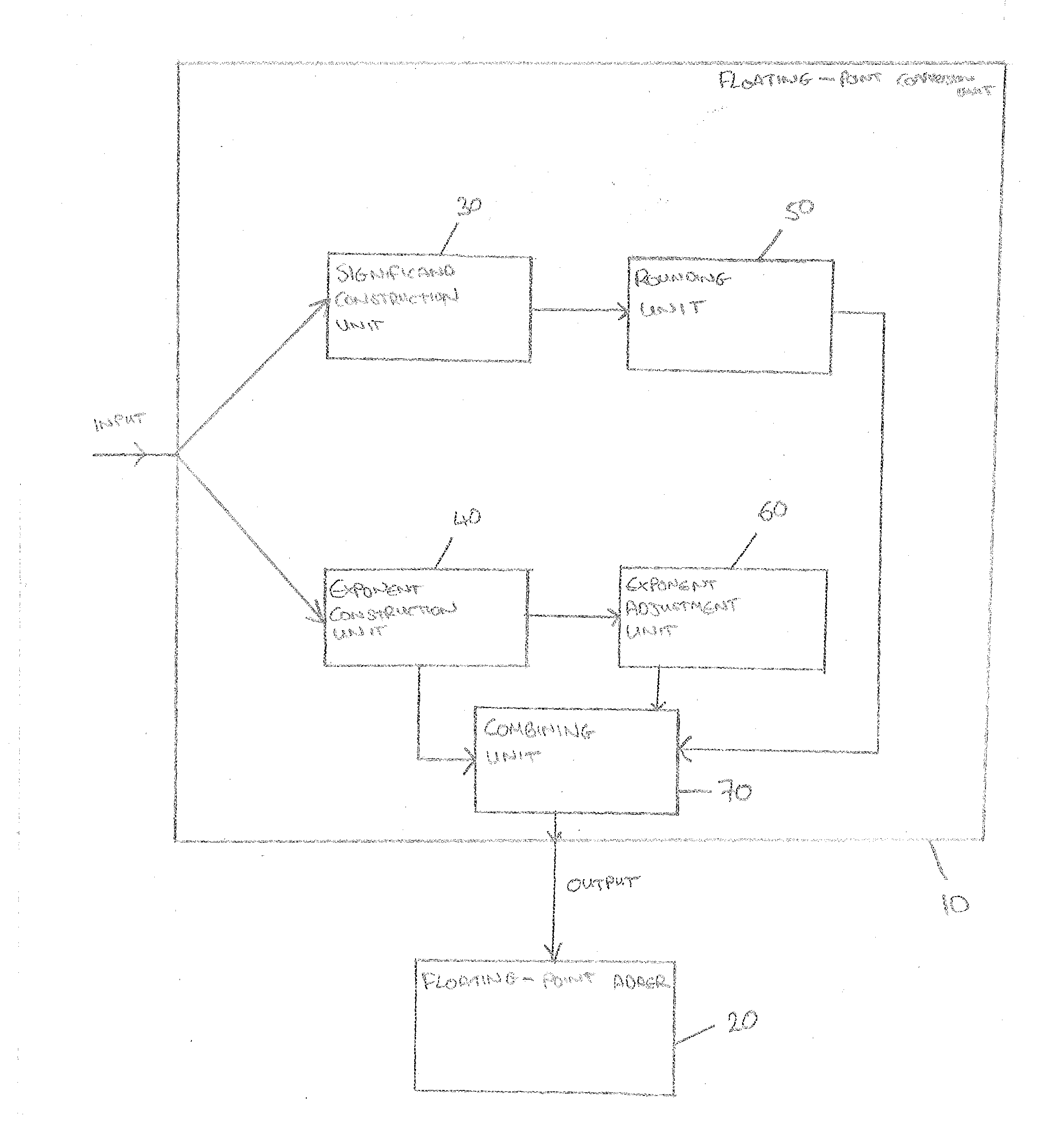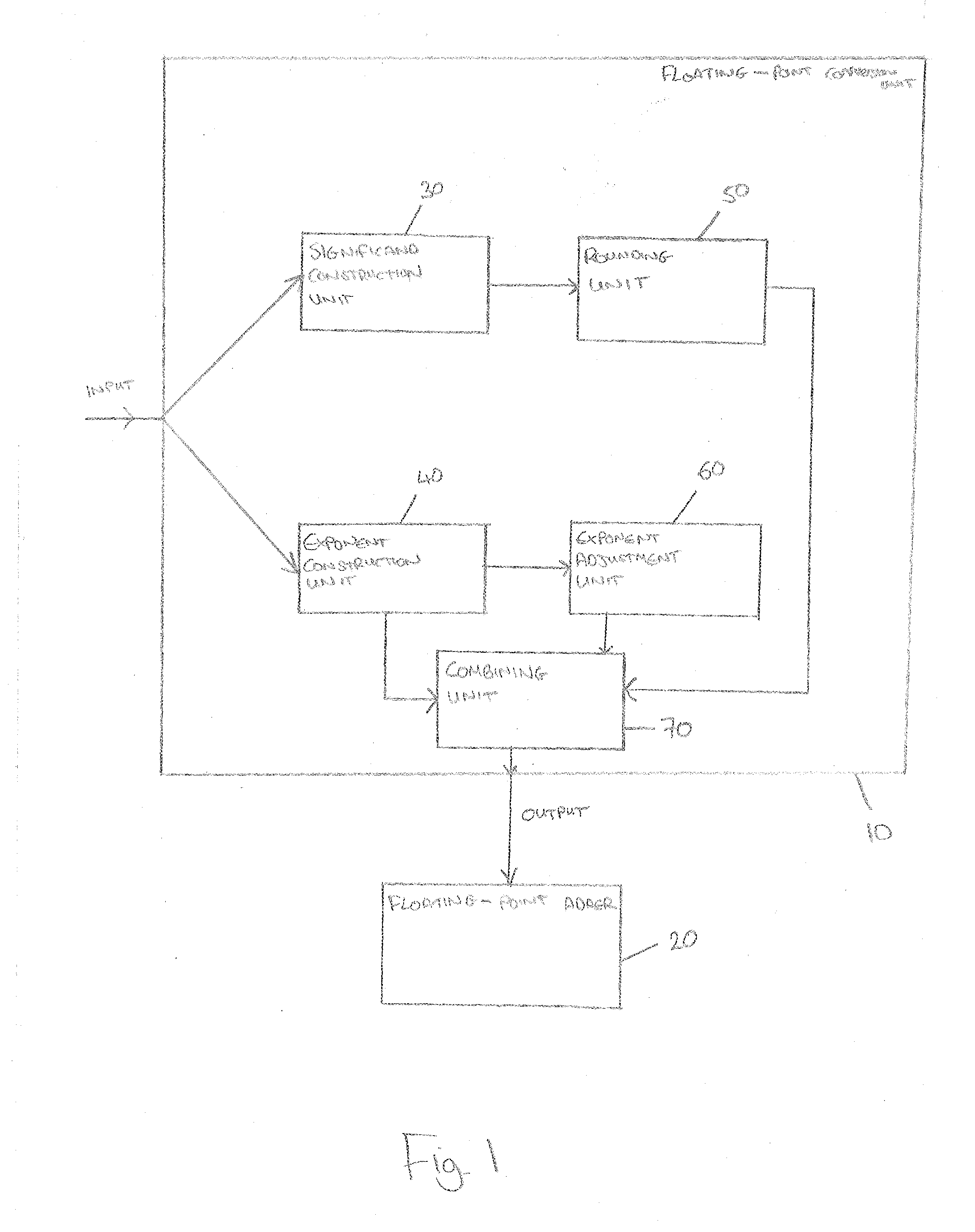Standalone floating-point conversion unit
- Summary
- Abstract
- Description
- Claims
- Application Information
AI Technical Summary
Benefits of technology
Problems solved by technology
Method used
Image
Examples
Embodiment Construction
[0018]Floating-point (FP) is a useful way of approximating real numbers using a small number of bits. The IEEE 754-2008 floating-point standard proposes multiple different formats for floating-point numbers. Examples include binary 64 (also known as double precision, or DP), binary 32 (also known as single precision, or SP), and binary 16 (also known as half precision, or HP). The numbers 64, 32, and 16 refer to the number of bits required for each format.
[0019]Floating-point numbers are quite similar to the “scientific notation” taught in science classes, where instead of negative two million, it is possible to write −2.0×106. The parts of this number are the sign (in this case negative), the significand (2.0), the base of the exponent (10), and the exponent (6). All of these parts have analogs in floating-point numbers, although there are differences, the most important of which is that the constituent parts are stored as binary numbers, and the base of the exponent is always 2. F...
PUM
 Login to View More
Login to View More Abstract
Description
Claims
Application Information
 Login to View More
Login to View More - R&D
- Intellectual Property
- Life Sciences
- Materials
- Tech Scout
- Unparalleled Data Quality
- Higher Quality Content
- 60% Fewer Hallucinations
Browse by: Latest US Patents, China's latest patents, Technical Efficacy Thesaurus, Application Domain, Technology Topic, Popular Technical Reports.
© 2025 PatSnap. All rights reserved.Legal|Privacy policy|Modern Slavery Act Transparency Statement|Sitemap|About US| Contact US: help@patsnap.com



